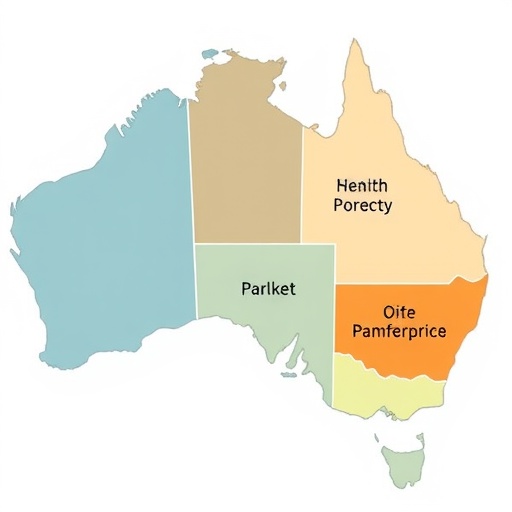The Sustainability and Fairness of Australia’s Age Pension: A Critical Analysis
As demographic shifts characterize the 21st century, significant attention must be extended toward the sustainability of welfare systems. One of the most talked-about topics in the realm of public policy is the age pension system in Australia, which has served as a financial safety net for the elderly population. A recent study conducted by researchers Chen, Shang, and Yang brings into focus pressing questions regarding the sustainability and fairness of this essential program. Their findings, propelled by rigorous forecasting techniques, delve deep into the future implications of an aging populace, creating a conversation that policymakers cannot afford to ignore.
At the core of the study is the Hamilton-Perry model, an effective tool for projecting the old-age dependency ratio. This ratio, which reflects the proportion of older individuals compared to the working-age population, is pivotal in assessing the economic burden placed on younger generations. With Australia poised to experience significant demographic changes in the coming decades, understanding this ratio will help unpack the potential strains on the pension system. The Hamilton-Perry model provides a detailed forecast that can illuminate trends and predict future scenarios, ultimately impacting policy formulation.
The study’s findings reveal that Australia is on the precipice of a substantial increase in the old-age dependency ratio. With the current life expectancy rates and declining birth rates, projected figures suggest that by 2050, there will be fewer workers to support a growing elderly population. This imbalance raises a fundamental question: can the existing age pension system be maintained without drastic policy revisions or financial injections? This concern underscores the need for immediate dialogue among stakeholders on how best to adapt to changing demographic realities.
Another critical aspect of Chen, Shang, and Yang’s research is the consideration of fairness within the pension system. While the age pension has traditionally provided support for those who have contributed to the economy throughout their lives, disparities still exist. The study highlights how inequities arise from various factors, including socio-economic status, and geographic location. These differences prompt a re-evaluation of whether the current structure serves everyone equitably, calling into question the principles of justice and fairness that underpin Australia’s welfare commitments.
Digging deeper into the mechanics of the age pension, the researchers categorize it into two main dimensions: sustainability and fairness. Sustainability refers to the system’s ability to remain solvent in the long term, while fairness concerns how benefits are distributed across different demographics. Both elements are intrinsically linked, as a system under financial duress often struggles to provide equitable outcomes for all recipients. In highlighting this connection, the research elegantly articulates the delicate balance policymakers must strike.
The implications of these findings cannot be overstated. As the population ages, the urgency for sustainable fiscal policies grows. The age pension is experiencing pressure not only from shifting demographics but also from rising costs associated with healthcare and living expenses. If reforms are not prioritized, the potential exists for a future where the pension system fails to adequately support those who depend on it, leading to increased poverty and hardship among the elderly.
Moreover, the researchers assert that the age pension should not be viewed in isolation. It is part of a larger socio-economic landscape that includes superannuation schemes, public health services, and social welfare initiatives. Therefore, any reform efforts must adopt a holistic approach, integrating all these facets to create a comprehensive strategy that can support older Australians effectively. This interconnectedness stresses the importance of collaborative policymaking that involves input from various sectors.
The findings also resonate with broader discussions on aging populations globally. Countries around the world face similar challenges as they grapple with the implications of demographic shifts. Lessons learned from Australia’s experience with the age pension can serve as a valuable reference point for other nations, encouraging transnational dialogues on best practices for welfare sustainability. Such exchanges can catalyze innovative solutions that are tailored to specific social contexts.
In light of these pressing issues, it is incumbent upon policymakers, researchers, and community leaders to engage in proactive discussions centered around pension reform. The merits of the current system must be critically examined—what works well, what does not, and what can be improved. Synergizing the efforts of various stakeholders will ensure that the age pension continues to serve its purpose without compromising future generations’ equity or economic stability.
The researchers conclude that urgent and strategic reforms are necessary for the age pension system to remain viable and fair. They advocate for a multifaceted approach, including flexible retirement age options, enhanced superannuation contributions, and innovative financial literacy programs aimed at empowering individuals to better prepare for their retirement. By embracing a forward-thinking mindset, Australia can safeguard its welfare commitments and validate its dedication to a fairer society.
As the dialogue surrounding the age pension continues to evolve, it becomes clear that robust leadership, informed decisions, and a commitment to equity will dictate its future trajectory. The findings of Chen, Shang, and Yang elicit a sense of urgency that should galvanize action now, ensuring that Australia’s age pension can sustain its promise of support for all generations.
Undeniably, the outcome of these discussions and reforms will shape the quality of life for Australia’s elderly population. As they navigate the complexities of an aging society, it is vital that they do so with the safety net of a well-structured and equitable pension system—a system that adapts to the changing landscape while upholding the country’s core values of fairness and justice.
Subject of Research: Sustainability and fairness of Australia’s age pension.
Article Title: Is the age pension in Australia sustainable and fair? Evidence from forecasting the old-age dependency ratio using the Hamilton-Perry model.
Article References:
Chen, S., Shang, H.L. & Yang, Y. Is the age pension in Australia sustainable and fair? Evidence from forecasting the old-age dependency ratio using the Hamilton-Perry model.
J Pop Research 42, 2 (2025). https://doi.org/10.1007/s12546-024-09352-z
Image Credits: AI Generated
DOI:
Keywords: Age Pension, Sustainability, Fairness, Old-Age Dependency Ratio, Hamilton-Perry Model, Australia.




